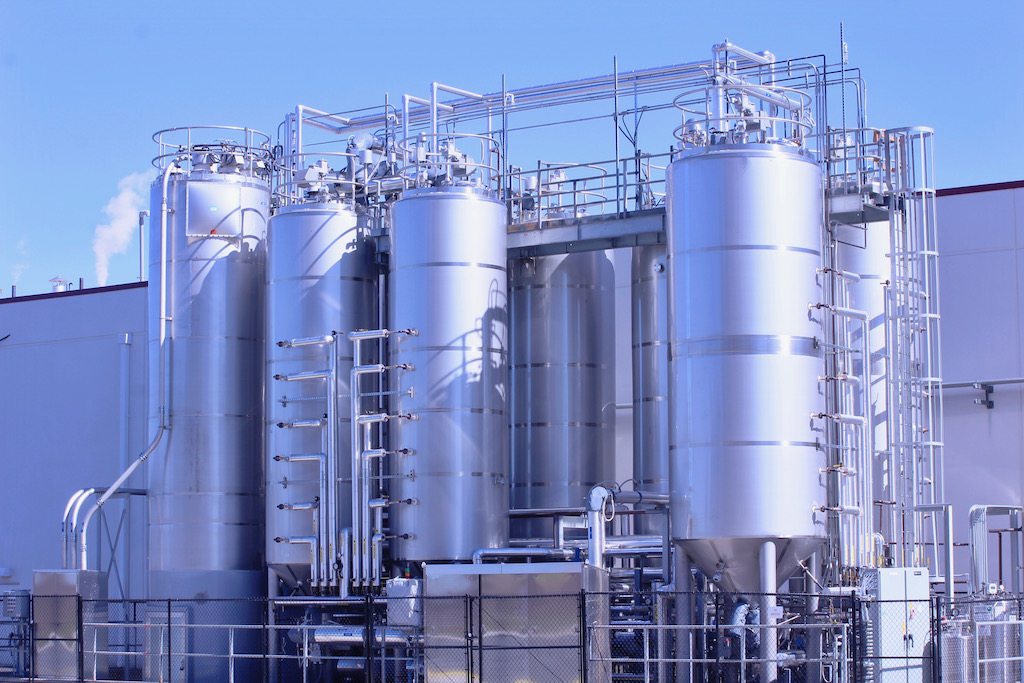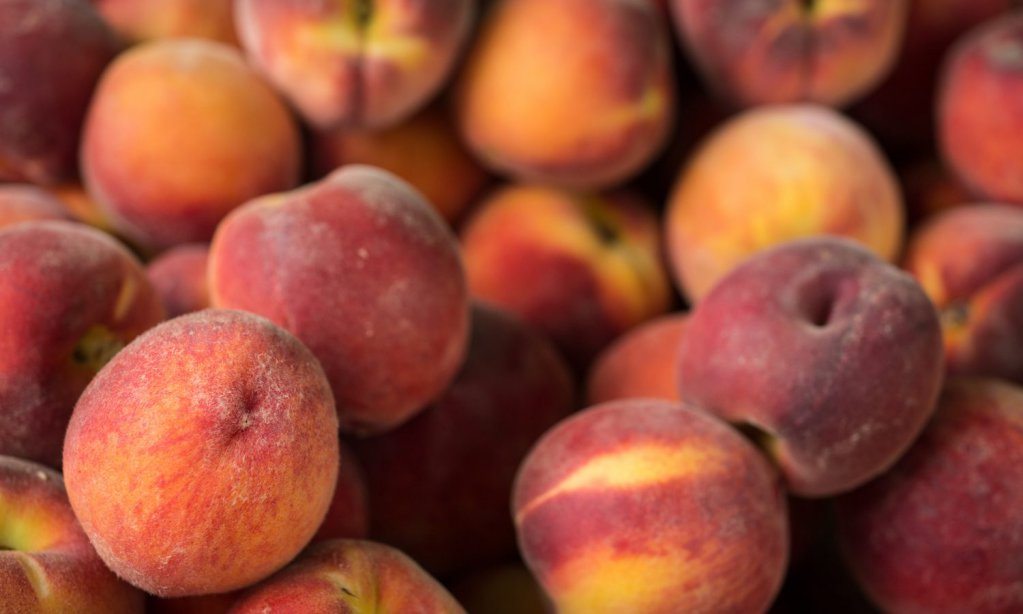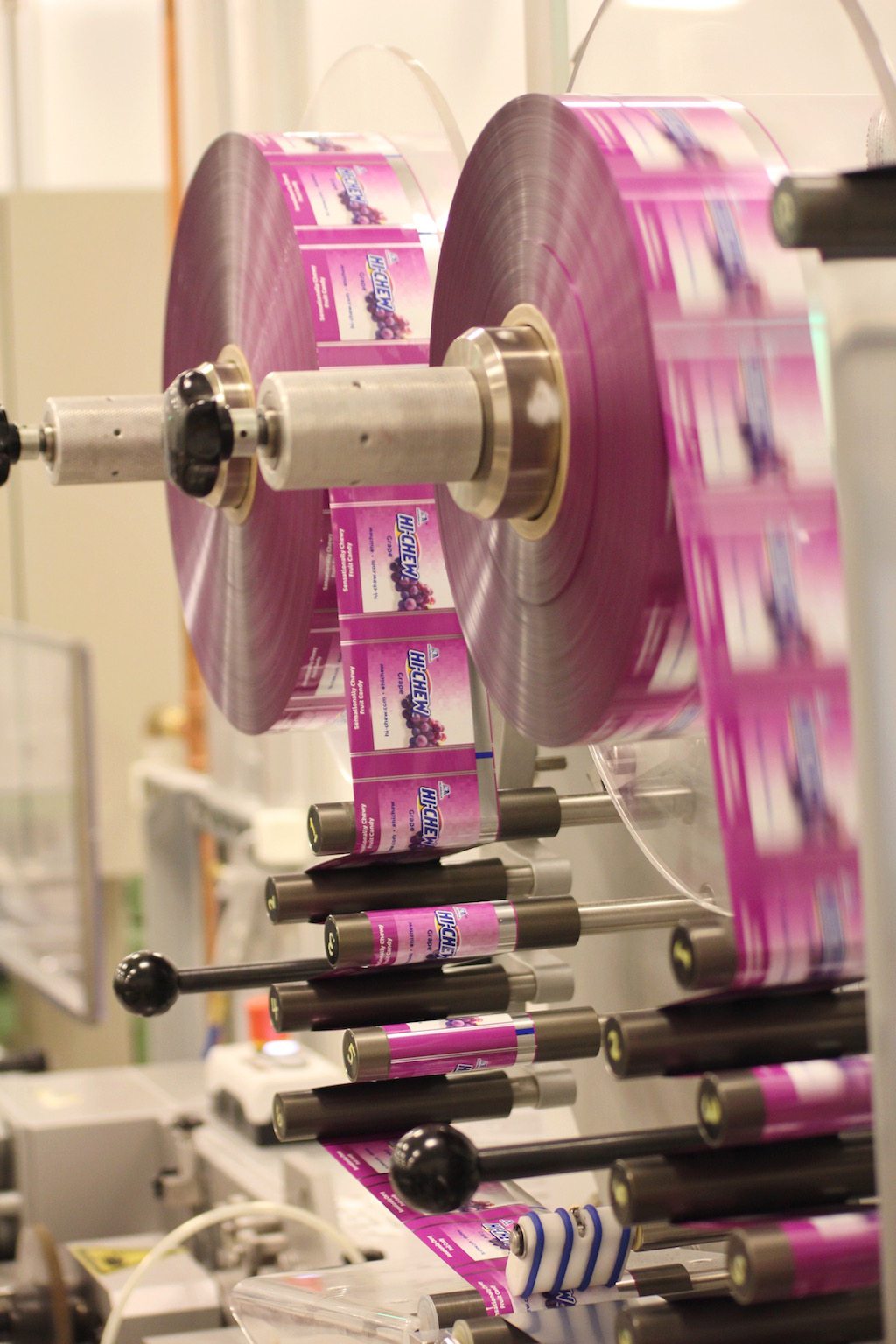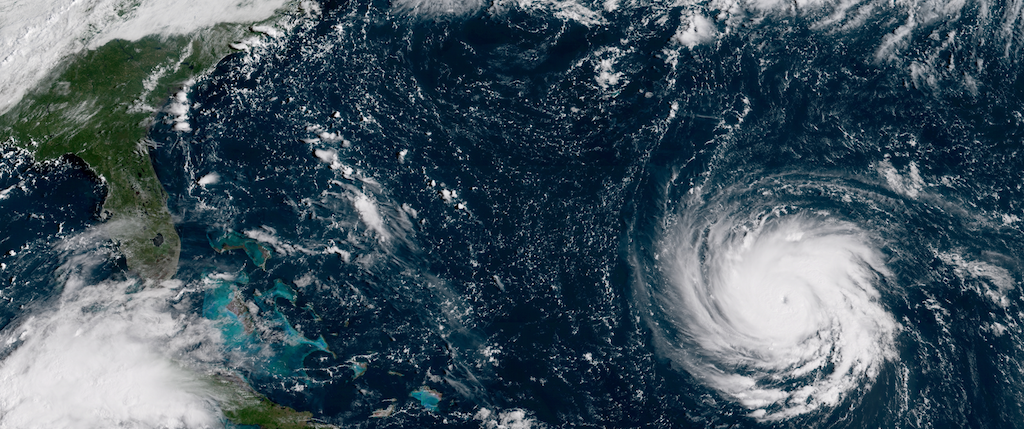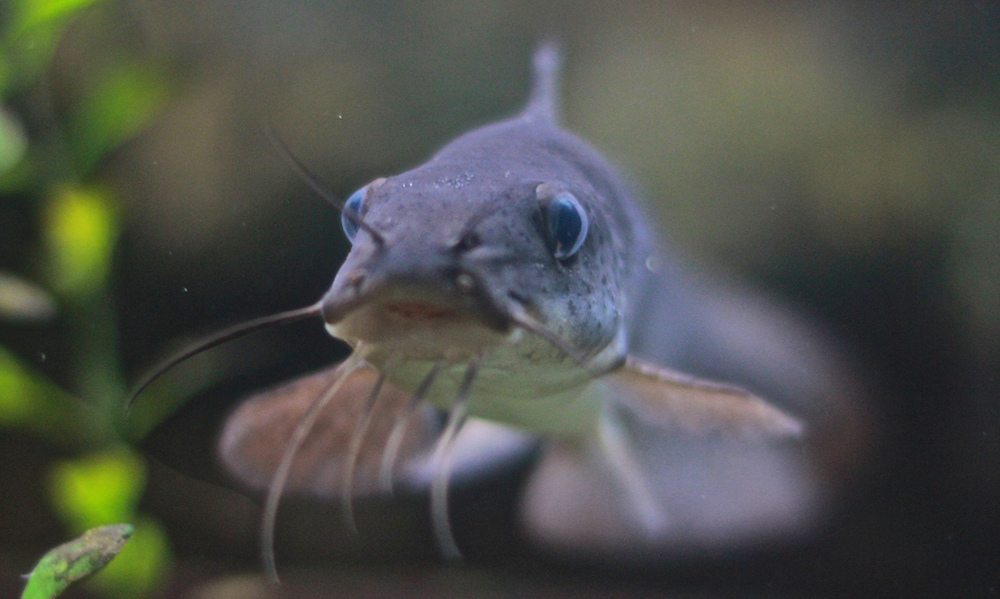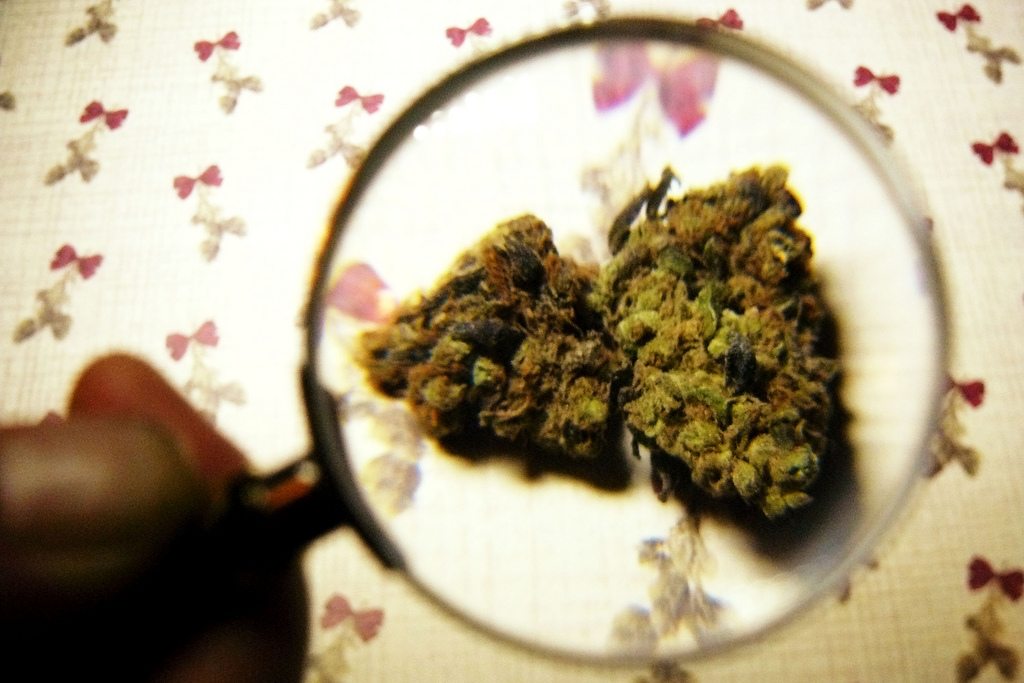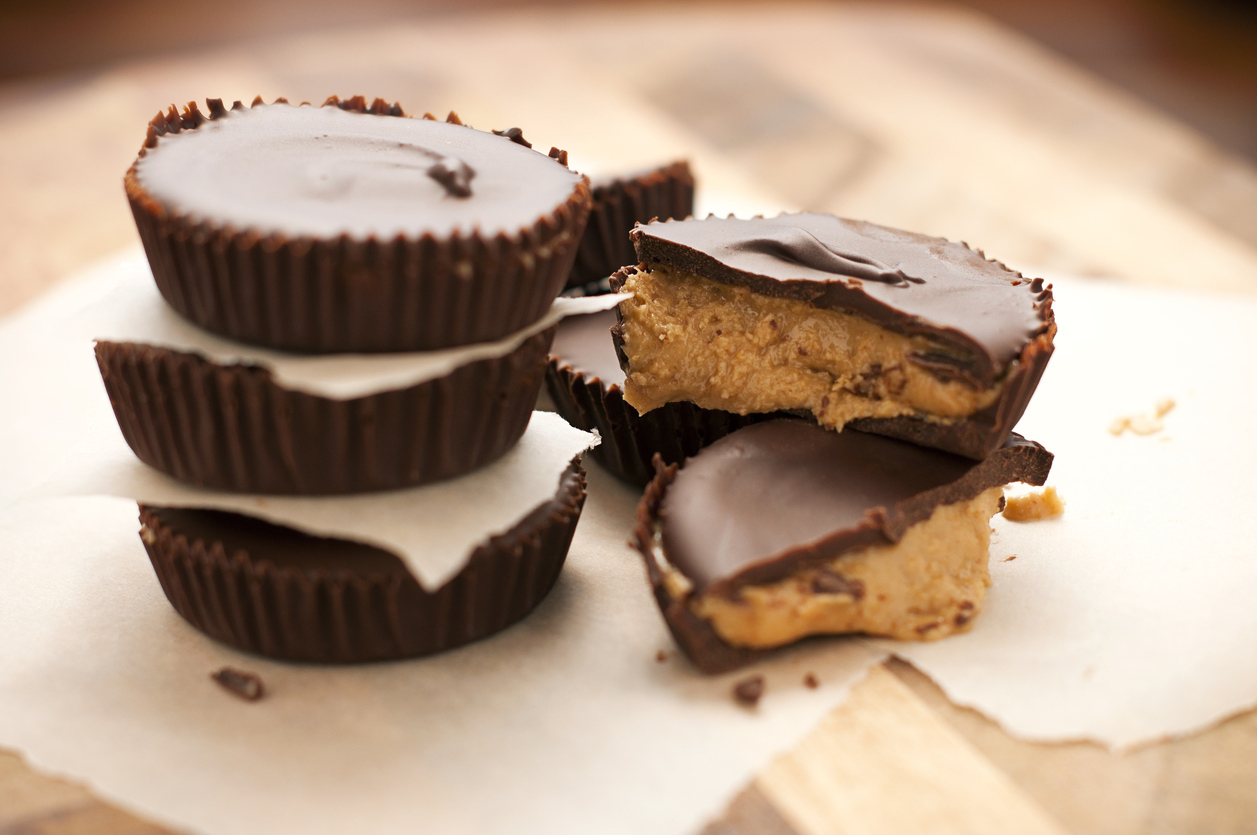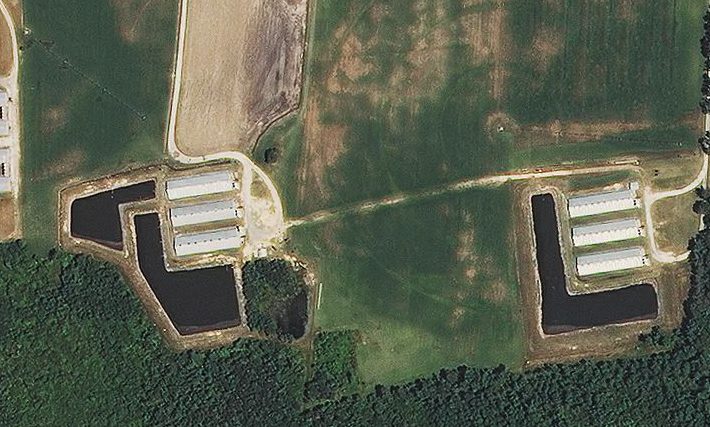What do pork production, an aging Japanese population, and Major League Baseball have to do with HI-CHEW?
HI-CHEW candy has all the indicators of cult status: Ryan Gosling stopped at five bodegas to look for it during a single interview in 2011, calling it “the candy that never quits on you.” The blog Candy Gurus ran a story about it titled “Hi Chews: Starbursts Better Sleep with One Eye Open” in 2012. The Red Sox have been stocking it in their bullpen for almost a decade. And, as if the candy’s status still needed confirming, it got its own Buzzfeed listicle in early 2016: “21 Photos You’ll Understand if You’re Slightly Obsessed With Hi-Chews.”
This article won the 2017 Business Reporting award from the Newswomen’s Club of New York.
The candy in question is a little like taffy and a little like gum. Similar to a Starburst, but less sweet and more fruity, it comes wrapped in paper and doesn’t stick to your teeth (that’s a patented trait). Like all great candies, it’s hard to pinpoint why, exactly, the HI-CHEW inspires such loyal fandom. Its acolytes tend to describe it in the abstract: One Amazon reviewer said “discovering Hi-Chew was like finding the answer to a question you never knew you wanted to ask.” Pat McCrory, former Governor of North Carolina, remembered his first time fondly, remarking that “one bite and we were friends for life.” Former Yankees relief pitcher Matt Thornton wondered aloud if it might contain illegally addictive ingredients.
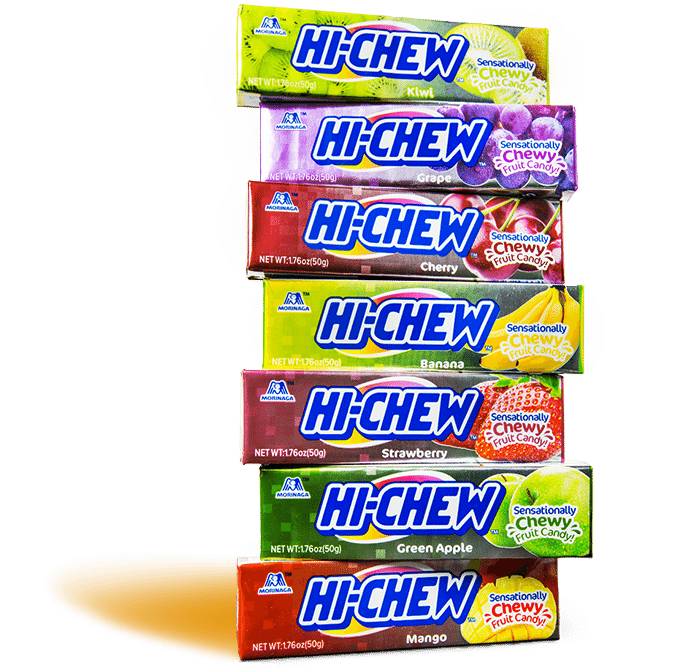
Photo courtesy of Morinaga
Photo courtesy of Morinaga
HI-CHEW is really big in Japan, too, where the company is headquartered (in fact, it’s the number one soft candy there). Manufactured by Morinaga & Company, HI-CHEW was invented more than sixty years ago as an alternative to bubble gum. Since it was considered rude to take food out of your mouth in public, Morinaga hoped to develop a socially acceptable sweet that chewed like gum but dissolved like a lozenge. Recipe testers combined caramel with strawberry flavoring and voila—the Chewlet, HI-CHEW’s predecessor, was born.
But until recently, the candy was hard to find in the United States. You could order it on the internet or spot it in Asian specialty groceries, but it had that elusive quality that adds a little glimmer to other imported sweets, like Pocky sticks and Coca-Cola made with real sugar. Like Ryan Gosling himself, HI-CHEW had mystique.
Something’s changed in the last few years. HI-CHEW has been popping up everywhere, from Costco to Wal-Mart. It’s even taken over the coveted checkout line real estate at my neighborhood grocery store. These days, the HI-CHEW is anything but rare.
The candy’s sudden abundance is no accident. The impish forces of globalization that govern Japanese trends, industrial pork production, aging populations, and America’s love for sugar have converged on the HI-CHEW: its makers recently opened a candy factory in Mebane, North Carolina. So if you’re seeing more of it at the movie theatre, it isn’t because Tokyo suddenly quadrupled its exports. By a strange twist of fate, your Japanese candy might actually be locally made.
┓
The HI-CHEW narrative doesn’t fit in the food story formula we’ve gotten used to reading. It’s not all about small-scale farmers and local food saving the world, nor is it all about Big Food taking advantage of the little guy at the expense of the environment. Sure, it’s about marketing sugar to children and manufacturing processed food, but it’s also about rebuilding a manufacturing sector made vulnerable by the decline of tobacco, and making use of the byproducts of an industrialized food system.
But before all that, it’s about Major League Baseball.
Way back in the mid-aughts, Morinaga executives had to confront a problem. Japan’s population was getting older. An aging customer base meant the candy company had two choices: start marketing to older folks, or find new, younger customers overseas. Faced with the prospect of dwindling sales, Morinaga started looking to China, Southeast Asia, and the U.S. for new HI-CHEWers.
The company soon opened a marketing and distribution office in Southern California. Taking on the consolidated mainstream candy market wasn’t going to be easy—Mars alone owns Starburst, Skittles, Orbit gum, Juicy Fruit, and Altoids in addition to its chocolate brands. Morinaga America, the company’s U.S. office, was up against decades of relationship building history between Big Candy and the groceries, movie theatres, and dollar stores of the world.

Left, the Morinaga factory in North Carolina, where HI-CHEW is made; right, Morinaga America Foods president Toshiaki Fukunaga
Nolan Allan
HI-CHEW’s big break came, improbably, in the epicenter of chewy candy nostalgia: the dugout. Baseball players have long been trendsetters in the smacking sector—Big League Chew caught on as a replacement for chewing tobacco when players started blowing bubbles in the 1970s, Wrigley Field owes its name to to the gum magnate, and Major League Baseball even adopted an official candy bar—Baby Ruth—from 2006 to 2008. What better place to win American hearts than in the stadium?
But by all accounts, the baseball breakthrough happened by accident. In 2008, Japanese pitcher Junichi Tazawa was a freshly recruited pitcher for the Red Sox. His duties as a rookie included keeping the bullpen stocked with gum. He threw in some HI-CHEWs, shared ‘em with the team, and the rest is history. The players scarfed them up, local stores ran out, and the Red Sox reached out to the company for more candy. A sponsorship was born in 2012, and HI-CHEW ads and sampling booths went up around the stadium. Morinaga told Asian news site RocketNews24 that its American sales doubled in 2013.
To understand the breakout growth of HI-CHEW in the U.S., look to Major League Baseball.
Since then, HI-CHEW has caught on with other baseball teams. Morinaga asked Yankees player Hiroki Kuroda to introduce the candy in an unpaid endorsement, the players went crazy, and a 2014 ESPN story about their obsession soon followed (Matt Thornton called it “a plague of the clubhouse”). Morinaga went on to supply HI-CHEW to players and fans of the L.A. Dodgers, the Chicago Cubs, and the Minnesota Twins through official marketing partnerships, boasting 300 percent sales growth over three years.
“We see the gradual growth, upward growth, of the sales of the product,” Toshiaki Fukunaga, president of Morinaga America Foods, Inc., tells me through translator Hisayo Tago. So it was only natural that Morinaga started to think about building a HI-CHEW factory on American soil.
“I think it’s like a lot of international companies that eventually move some type of production here to the United States,” says Chris Chung, CEO of the Economic Development Partnership of North Carolina (EDPNC). “They initially start off by exporting products into the U.S. market, and at some point, the sales grow to a level where it logically makes sense to put production here. Not only to be able to better respond to the customer demand from those growing sales, but also it can be a bit of a hedge against things like currency fluctuations.”
Grape HI-CHEW labels in production
So Morinaga began a search for its U.S. home. The ideal location needed to have a skilled labor force, access to the highway for distribution, and moderate weather. More than a dozen American towns fit the bill.
As HI-CHEW was slowly winning over American eaters, a group in North Carolina was looking to attract exactly the type of business Morinaga would eventually build. “Three of the state’s traditional value-added strongholds — textiles, furniture, and tobacco — have significantly declined over the last 25 years,” reads a report by the North Carolina Food Manufacturing Task Force, commissioned by ex-Governor McCrory. “As a result, North Carolina has underused manufacturing capacity, particularly in the rural areas.”
North Carolina policymakers saw food production as an industry ripe for growth. The state was already home to factories that made Pepsi, Lance crackers, Butterball turkey products, Mt. Olive pickles, and Texas Pete hot sauce. A 2014 feasibility study conducted by the General Assembly showed that, with the right approach, growth in food manufacturing could add $10 billion to the state economy and employ as many as 38,000 people in less than ten years—a number that’s equal to about 15 percent of the state’s total number of unemployed people as of February 2017.
And as part of a broader pivot away from textiles and tobacco, food manufacturing makes a lot of economic sense for North Carolina. It already produces huge quantities of chicken, Christmas trees, and sweet potatoes, and is the country’s second-largest hog producing state. Why not try to attract businesses that can augment those existing industries? “A lot of people involved in the agribusiness community have realized that we’re good at growing the crops, we’re good at raising the animals—what we maybe haven’t done as good a job of is capitalizing on additional value-add activity, such as food processing and food manufacturing,” Chung says.
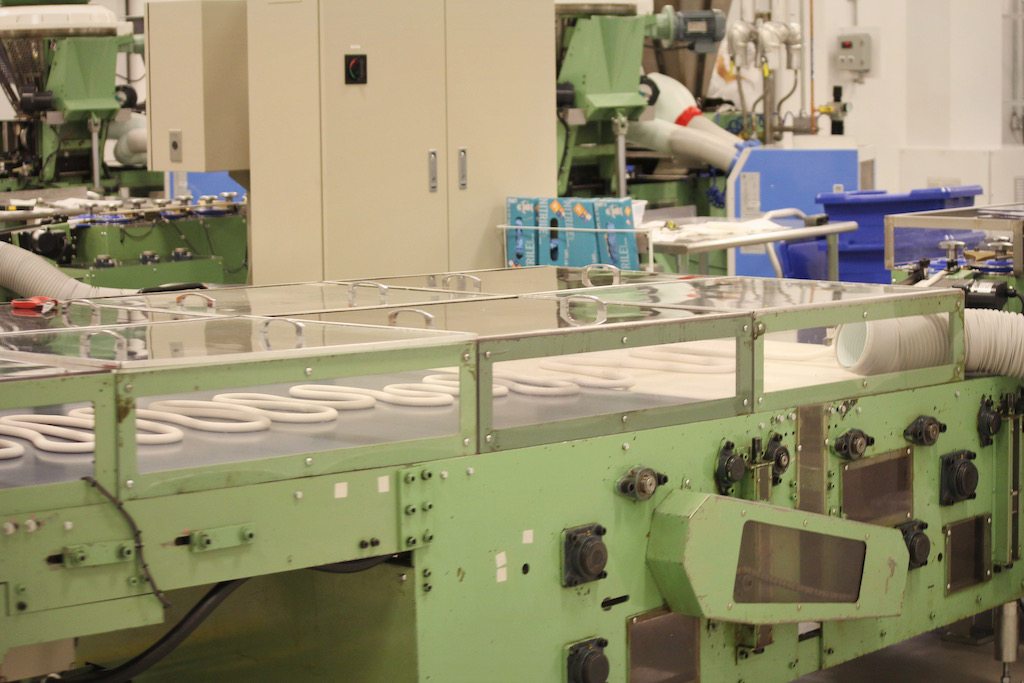
Unformed candy on its way to being sliced and individually packaged
Nolan Allan
That means grinding breakfast sausage and smoking bacon out of the pork that’s grown in the eastern part of North Carolina. Maybe it also means pitching a frozen sweet potato fry factory to Kraft, or letting Purina know there are cheap pet food ingredients available locally. It also means making use of the state’s natural resources, like clean water, to attract big breweries looking to expand. The latter has already proved hugely successful—Oskar Blues and Sierra Nevada have both opened North Carolina facilities in recent years. But the state needs more than a couple big breweries to employ the hoped-for 38,000 people in less than ten years.
So after the task force office identified food manufacturing as a focus area, EDPNC was charged with bringing in the bacon. Chung tells me they’ve taken several different approaches: advertising in trade magazines, showing up to conferences, even working with established North Carolina economic department offices in China, Japan, and South Korea that are designed to attract foreign direct investment.
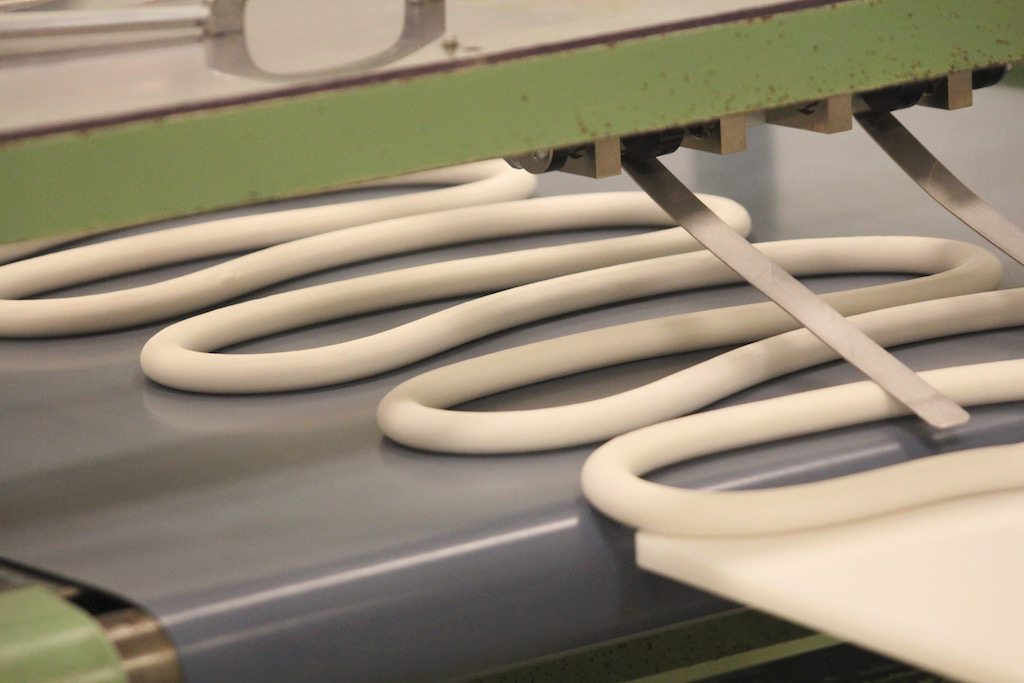
The candy is formed into a snake before it’s cut
It bears mentioning that these clusters are interdependent. For instance, one of the companies that manufactures gelatin—an ingredient used in lots of candies, including HI-CHEW—moved to North Carolina in part because of the proximity of the animal processing cluster. Gelatin is made from pork byproducts, and pork byproducts are abundant at Smithfield Foods, a major pork processor in the area. The gelatin company, Nitta, benefits from that shortened supply chain I mentioned above. The skin from the animals can go straight from the slaughterhouse to the gelatin manufacturing plant, cutting down on transportation costs. It may seem unappetizing to characterize a candy cluster as a sweet silver lining in the oft-maligned industrial pork industry. But even though it takes some of the Willy Wonka shine off the candy factory image, it makes perfect sense that candy companies would situate their factories around the production of a key ingredient.
Part of the broader strategy to bring in new food companies is establishing and promoting “clusters” of companies that can help each other establish infrastructure or shorten the supply chain. For example, an animal processing and manufacturing cluster is made up of farms, slaughterhouses, and processing facilities that are all located close together (and, in some cases, all owned by Tyson or Smithfield). North Carolina boasts the “sixth-fastest growing confectionery production cluster” in the nation, too, which means EDPNC hopes candy companies see it as a friendly location option.
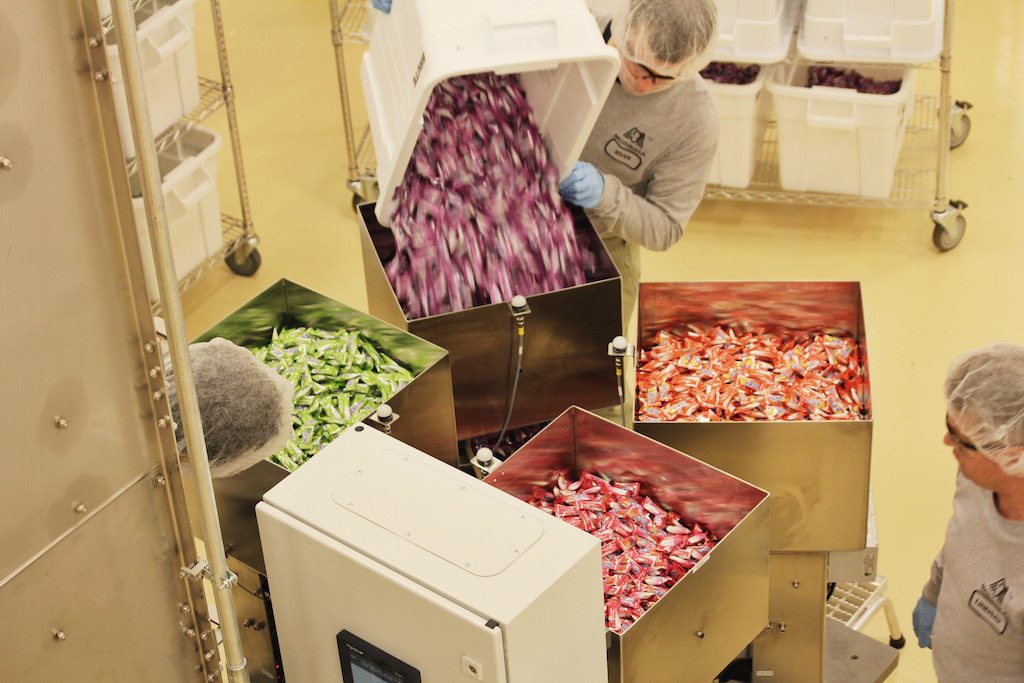
Workers weigh and sort HI-CHEWS
Still, most of the other HI-CHEW ingredients—palm oil, glucose syrup, citric acid—come from far outside North Carolina. It seems unlikely that the existence of a gelatin plant would be a make-or-break factor in a company’s location decision. I asked Chung what else confectionaries had to gain from being close to one another. He told me the labor force is key. If a region is home to lots of people who are already experienced in making candy, a new candy factory will have an easier time finding employees. And infrastructural elements, like a sanitary sewer system that can handle industrial volume, are important as well.
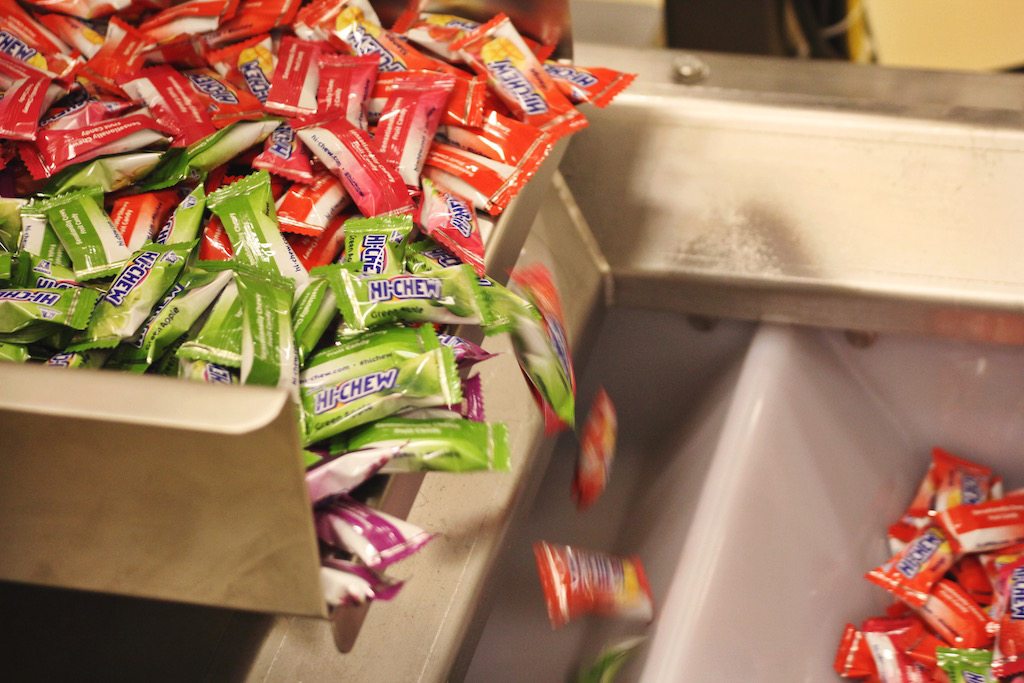
Packaged Hi Chew being sorted and weighed for further packaging
So North Carolina was looking to attract new food factories—especially from Asia, and especially to make candy—just as Morinaga was looking to build on American soil. It seemed a perfect fit. But neither the EDPNC folks nor the Morinaga folks I spoke to were sure of the exact origin of the connection between Morinaga and North Carolina.
Or the relationship might have originated with a call to the governor’s office or the state commerce department from Morinaga. Either way, North Carolina emerged as one of a dozen or so candidates.
It might’ve been in Tokyo, where EDCNP employs people to advocate on behalf of North Carolina business. “We maintain an office in Japan specifically for the purpose of recruiting Japanese employers here,” Chung explains, adding that Japanese companies hold special appeal for EDPNC. “Japanese companies take an admirable long term view of things. They tend to be very good corporate citizens. They’re going to be here for the long haul.” (This type of setup, where a state maintains offices abroad to attract direct investment and advocate on behalf of its own exporters, isn’t uncommon.)
“When it comes to the final decision, it was, of course, almost like an apple-to-apple comparison,” Morinaga America president Fukunaga says. “However, the big, big influence was the state and the county staff, who were very passionate about Morinaga and bringing it to North Carolina. So their dedication and efforts were strongly appealing.”
Passion, sure. But North Carolina also gave Morinaga a pretty sweet series of tax breaks. The town of Mebane will pay up to $720,000 in incentives, and the discretionary cash grant program, One North Carolina fund, will pay up to $264,000, based on performance. Additionally, Morinaga could receive up to $1.5 million over five years from Orange County, where it is based. All told, the incentives could add up to more than $2.5 million. In return, Morinaga promised to hire about ninety people at an average salary of $38,000 as part of its estimated $48 million investment.
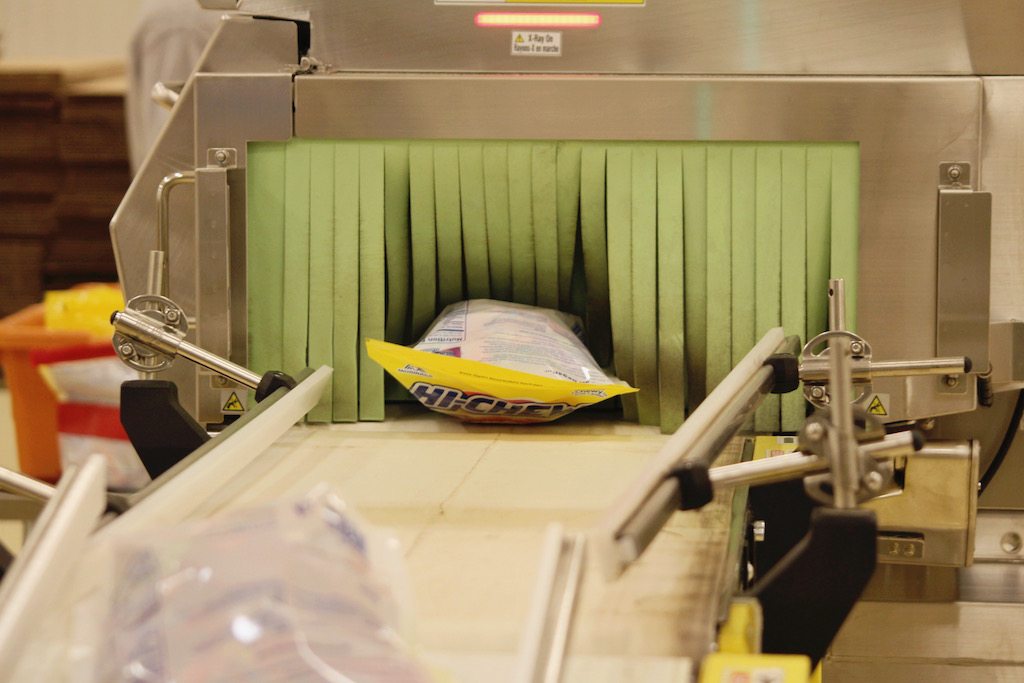
The packaged candy is x-rayed to ensure uniformity
When the HI-CHEW plant opened in May of 2016, the ceremony featured a traditional sake-barrel breaking by McCrory, and the HI-CHEWs flowed freely. Since then, Morinaga America has launched bite-sized HI-CHEW, fizzy soda HI-CHEW, and a line of sour candies.
So Morinaga got its factory, and North Carolina grew its confectionary cluster. It’s a partnership that won’t be whispered about at the farmers’ market, and “foreign direct investment” may never top any “locavore buzzword of the year” list. But maybe that’s not the point, anyway. A good food story doesn’t necessarily have to be a small food story. Maybe the point is akin to what that Amazon reviewer said about the soft, beloved chew: more answers to more questions for more people who never knew they wanted to ask.
